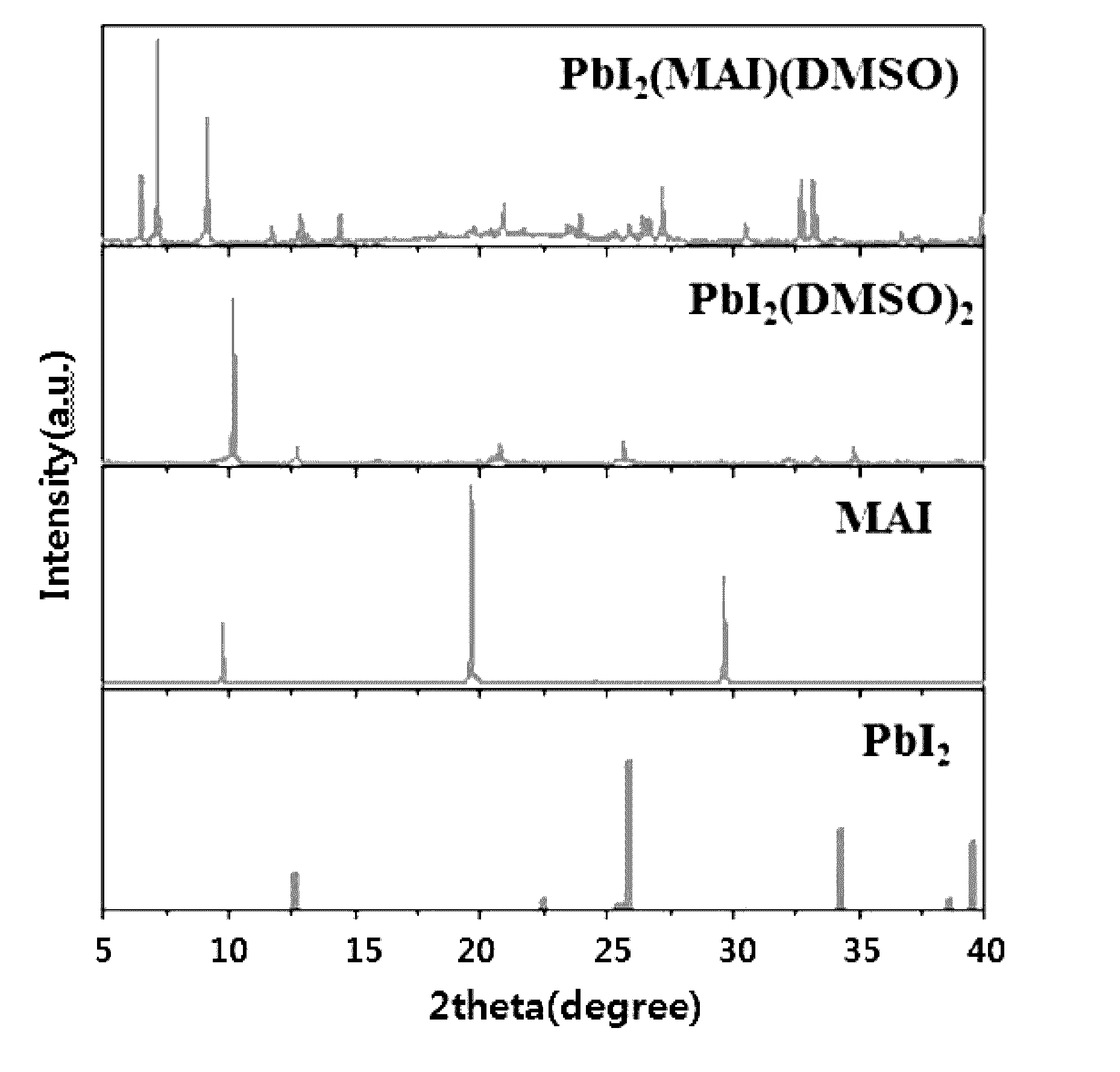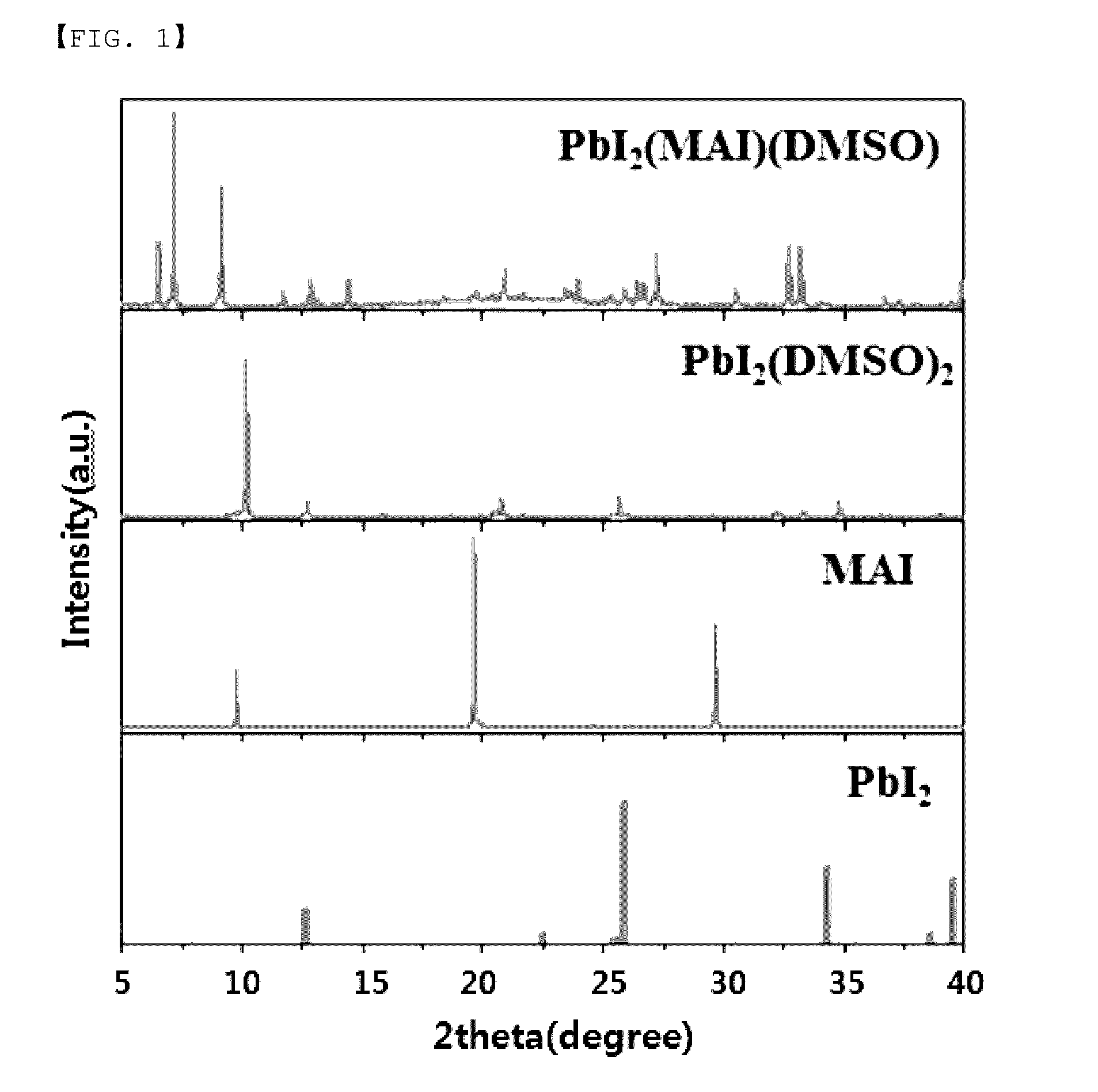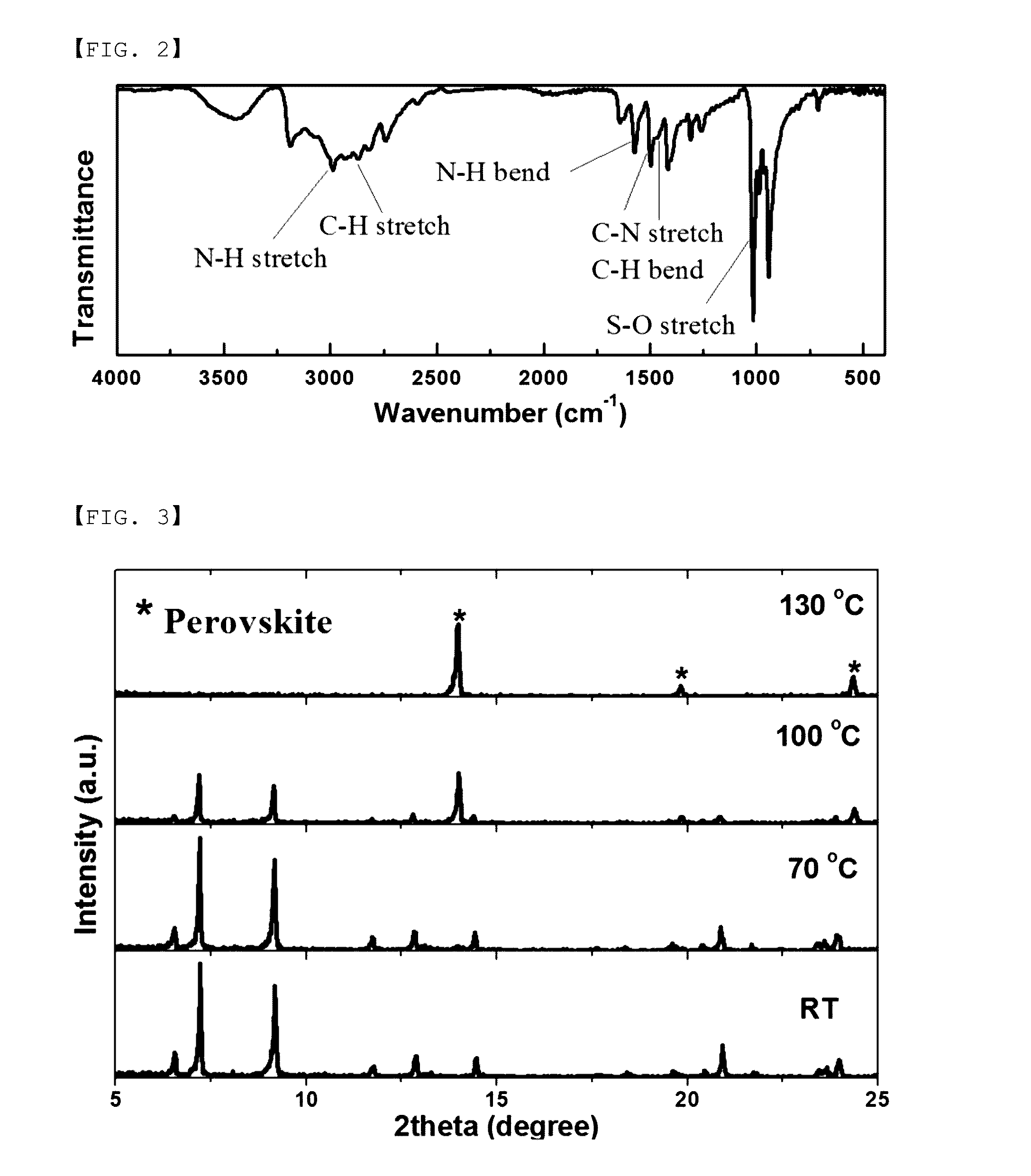Precursor of inorganic/organic hybrid perovskite compound
a technology of inorganic/organic hybrid perovskite and compound, which is applied in the direction of liquid/solution decomposition chemical coating, coating, chemical apparatus and processes, etc., can solve the problems of difficult to manufacture dense thin films having a flat surface in practice, difficult to control the self-assembling characteristic, and high crystallization rate, etc., to achieve excellent crystallinity and high quality , easy to maintain quality
- Summary
- Abstract
- Description
- Claims
- Application Information
AI Technical Summary
Benefits of technology
Problems solved by technology
Method used
Image
Examples
example 1
Preparation of Perovskite Precursor
[0113]CH3NH3I (hereinafter, referred to as MAI) and PbI2 powders were added to a DMSO solvent in a stoichiometric ratio of 1:1, and stirred at 60° C. for 2 hours to prepare a 0.8 M CH2NH3I—PbI2-DMSO solution. This solution was added dropwise to toluene, and then precipitated powder was separated and collected by filter paper, and dried at a room temperature for 1 hour.
[0114]The powder prepared in Comparative Example 1, MAI and PbI2 which are precursors, and powder obtained in Example 1 were subjected to X-ray diffraction analysis using a Cu Kα ray, and the result is illustrated in FIG. 1.
[0115]As shown in FIG. 1, it is recognized that the powder prepared in Example 1 (indicated as PbI2(MAI) (DMSO) in FIG. 1) does not contain the phases of MAI and PbI2 materials which are precursors. Further, the powder prepared in Comparative Example 1 is reported by H. Miyamae as PbI2(DMSO)2 (Chemistry Lett., 9, 663, 1980). When comparing the result of XRD of this...
example 2
Preparation of Precursor Thin Film
[0120]A MAI-PbI2-DMSO solution was prepared by using the method presented in Example 1, except that γ-butyrolactone (GBL) was used as an additional mixed solvent. That is, the solution was prepared in a 0.8 M concentration based on MAPbI3, with a volume ratio of GBL:DMSO of 7:3.
[0121]On a fused silica substrate, the prepared MAI-PbI2-DMSO solution (total 1 ml) was coated (injected) batchwise on a rotation center, and started spin coating at 5000 rpm. At the point of 50 seconds after starting spin coating, 1 ml of a non-solvent, toluene was coated (injected) batchwise again on a rotation center of a porous electrode being rotated, and then spin coating proceeded for further seconds. After completing spin coating, drying was carried out at a room temperature for 1 hour. Thereafter, under the condition of a temperature of 100° C. and ambient pressure, heat treatment was carried out for 30 minutes to form a light absorber which is a perovskite compound ...
example 3
Manufacture of Porous TiO2 Thin Film Substrate
[0125]A glass substrate on which a fluorine-containing tin oxide was coated (FTO; F-doped SnO2, 8 ohms / cm2, Pilkington, hereinafter, referred to as FTO substrate (first electrode)) was cut into a size of 25×25 mm, and then an end portion thereof was etched, thereby partially removing FTO.
[0126]On the cut and partially etched FTO substrate, a TiO2 dense film having a thickness of 50 nm was manufactured by spray pyrolysis, as a metal oxide thin film. The spray pyrolysis was carried out using a TAA (Titanium acetylacetonate):EtOH (1:9 v / v %) solution, and the thickness was adjusted in a manner of repeating the process of spraying the solution for 3 seconds, and stopping for 10 seconds, on the FTO substrate placed on a hotplate maintained at 450° C.
[0127]An ethyl cellulose solution in which 10 wt % of ethyl cellulose was dissolved in ethyl alcohol was added to TiO2 powder (prepared by hydrothermal treatment of an aqueous titanium peroxocompl...
PUM
| Property | Measurement | Unit |
|---|---|---|
| 2θ | aaaaa | aaaaa |
| 2θ | aaaaa | aaaaa |
| 2θ | aaaaa | aaaaa |
Abstract
Description
Claims
Application Information
 Login to View More
Login to View More - R&D
- Intellectual Property
- Life Sciences
- Materials
- Tech Scout
- Unparalleled Data Quality
- Higher Quality Content
- 60% Fewer Hallucinations
Browse by: Latest US Patents, China's latest patents, Technical Efficacy Thesaurus, Application Domain, Technology Topic, Popular Technical Reports.
© 2025 PatSnap. All rights reserved.Legal|Privacy policy|Modern Slavery Act Transparency Statement|Sitemap|About US| Contact US: help@patsnap.com



